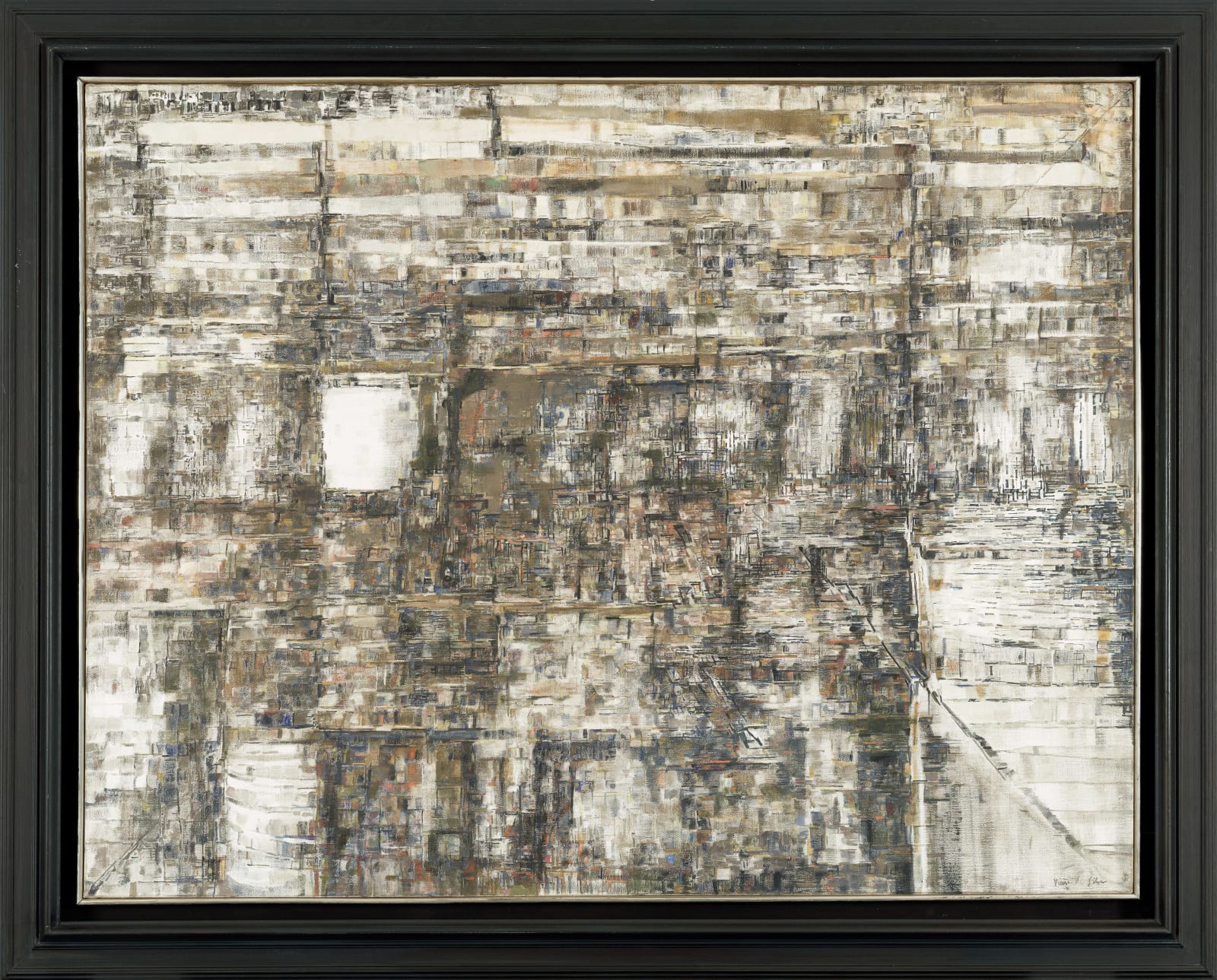-
Artworks






Maria Helena Vieira da Silva
Mémoire, 1966–67Signed 'Vieira da Silva' and dated (lower right)Oil on canvas114 by 146.9 cm (44⅞ by 57⅞ in.)63490© Maria Helena Vieira da SilvaFurther images
Painted in 1966-67. Mémoire is emblematic of Vieira da Silva’s lifelong commitment to memory as a format for artistic exploration. Having lived through the Second World War in exile,...Painted in 1966-67.
Mémoire is emblematic of Vieira da Silva’s lifelong commitment to memory as a format for artistic exploration. Having lived through the Second World War in exile, Vieira da Silva was forced to paint from recollections of her native Lisbon and her adopted home of Paris before their destruction. Mémoire conjures images of an expansive cityscape with its framework of ochre, charcoal, and blue grey architectonic lines. These layers of colored compartments and traversing lines create a leitmotif throughout her paintings of the 1960s. Vieira da Silva used linear perspective as a mnemonic tool, converting the physical spaces of her world into memoryscapes. In a letter she wrote in 1939 to the artist Julian Trevelyan, she noted that she used the eyes of her memory to create her disorienting structures, rather than her “real” eyes. In the present work, Vieira da Silva builds upon Vibrationism–an approach to painting developed by one of the artist’s greatest influences, the Uraguayan Constructivist Joaquín Torres-García. Vibrationism combines Cubist and Futurist elements in its focus on scenes from urbanity; in Mémoire, as in Torres-García’s Constructive City with Universal Man, a grid-like structure organizes the geometric and figural forms of city life. With Mémoire Vieira da Silva pushes the symbolism of Torres-García to its utmost abstract expression.
Music Credit: Metamorphosis: Metamorphosis Two (Metamorphosis Two) by Bruce Brubaker
6of 6











